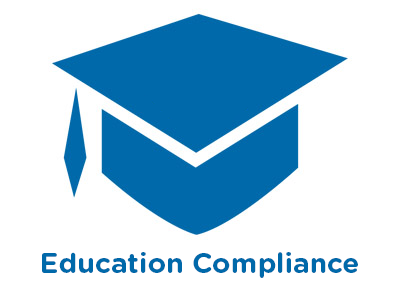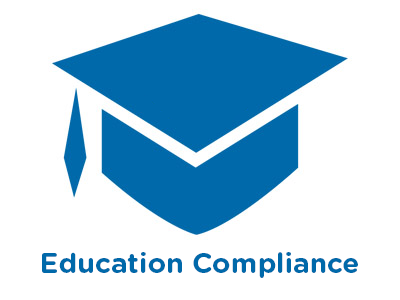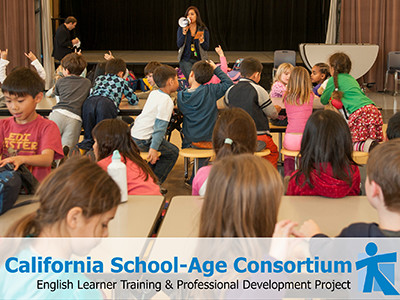 |
Salvage Operations |
1.00 |
This introductory level course introduces the concept of salvage operations. The course defines salvage operations and describes techniques used to protect buildings and contents from damage caused by fire suppression operations and preserve evidence of fire origin. This course is evaluated with a final quiz. The clock time for this course is approximately one clock hour. |
 |
I Belong: Supporting Social Awareness and Interpersonal Skills |
2.00 |
We all have lived full lives with varied experiences, both positive and negative. Whether we are aware or not, our experiences, including our social, political and cultural beliefs and background, affect our practice with youth. During this course, participants will learn about how culturally grounded beliefs and background affect our practice with youth, how to help raise our awareness of those factors, and reflect on current and new strategies that support the development young people’s social-awareness and interpersonal skills. |
 |
Incentives and Motivation |
2.00 |
Motivation, incentives and rewards can help pull a team together and keep a successful staff on track. In our profession, incentives rarely come in the form of extra earnings, so we have to be creative in designing incentives. During this course, participants will look at several strategies for providing meaningful incentives for staff, as well as techniques to determine what motivates them and their staff. |
 |
Exploring Developmental Needs and Characteristics of Different Age Groups |
2.00 |
Certain developmental needs and traits are associated with younger school-age children, while others are typical of older school-age children and youth. While the differences between school-age children of different ages are not clear-cut, there are some general traits and tasks that are often associated with younger (ages 5 – 7), middle (ages 8 – 10), and older (ages 11 – 12) school-age children and youth. Understanding these differences helps staff plan appropriate activities and guidance strategies for children of different ages. |
 |
Lemurs |
2.00 |
In this module, you'll learn about the natural history and conservation of a fascinating group of primates: lemurs. |
 |
Creating a Supportive Classroom Community (CDA 3) |
2.00 |
Learn ways to bring out nurturing, caring behaviors in children and youth to create a classroom community where children and youth support each other. Learn how to use non-competitive games to foster acceptance of all children and youth. Identify the strengths and weaknesses for both you and the children and youth in your program, and how to put the strengths to good use creating a sense of acceptance and community. This course is designed to be part of a Child Development Associate (CDA) Credential™ curriculum. It covers CDA Subject Area 3: Supporting Children's Social and Emotional Development and may also be taken as a stand-alone learning event or as part of a broader early childhood education curriculum. |
 |
Coaching: Fundamentals Of Coaching |
1.00 |
Coaching is the continuous effort to help employees maximize their abilities through personalized counseling and advice. The coaching process not only trains employees to become familiar with business procedures and expectations, but also motivates them to reach both individual and company goals.
Coaching is beneficial to employees because it encourages them to discover their worth and potential. Through proper coaching sessions, employees build confidence, improve their work habits, and increase their productivity.
In this course you will learn to:
1. Define coaching and identify the qualities of an effective coach
2. Build a coaching foundation and plan a coaching strategy. |
 |
Creating and Managing Budgets in School-Age Programs |
2.00 |
When program budgets are developed through a careful, step-by-step process, they become valuable planning tools. By using effective budget planning tools and strategies, school-age care professionals can make realistic projections about the programs financial stability, and design strategies for generating and allocating resources to support the programs vision and mission. It is important for school-age care professionals to understand that the budget process is ongoing. It involves linking financial goals to program goals, identifying program priorities, allocating resources effectively, using reliable methods for calculating potential expenses and revenues, monitoring performance against projections made, and making needed changes and adjustments for the future. |
 |
A Student Guide to the Clery Act |
0.50 |
The Jeanne Clery Disclosure of Campus Security Policy and Campus Crime Statistics Act, commonly known as the Clery Act, is a federal law that requires colleges and universities to track and disclose information about crimes that occur on or near campus. This course is designed to help students understand how the Clery Act impacts them and their school. |
 |
Understanding the Behavior of Children and Youth |
2.00 |
The development of children and youth can cause them to behave in ways that can be trying for even the most knowledgeable and experienced staff. When staff understands what is driving the behavior, they can help to guide and encourage acceptable behaviors. This course will provide participants with the knowledge and skills necessary to prevent unwanted behavior by meeting the needs of children and youth before they act out. |
 |
Coaching with Head and Heart |
2.00 |
Leaders and managers need strategies to support others in their own growth and development. In this course, participants will be introduced to a coaching process that supports individuals to make more conscious decisions, build off their strengths and internal resources and take new action. Participants will understand when coaching is needed, the mindset required, and the critical skills needed for effective coaching, including deep listening and inquiry. |
 |
Adapting to Change |
0.50 |
Change is always happening, whether we realize it or not. Our bodies are constantly generating new cells to replace old ones. Stock prices are rising and falling. In this course, you will discover different strategies for reacting to and dealing with change in life. |
 |
Protecting Yourself While Responding to Earthquakes |
2.00 |
This course covers the importance of earthquake safety and protecting yourself before, during, and after an earthquake. It also covers how first responders should keep themselves safe when responding to an earthquake scene. |
 |
Project Teams: Preparing Teams for Project Work (Instructor Guide) |
1.00 |
Building a project team is more complex than assigning employees to the team. Team members must feel a sense of dedication to other team members, as well as to the project itself. Members who are not dedicated to the project team often disregard meetings, deadlines, and commitments, causing the entire team to suffer. To avoid these problems, the team managers and supervisors need to encourage team building to benefit the project, the team members, and the organization.
In this course you will learn to: empower and motivate a project team and develop positive culture in a project team, identify the causes of change in a team and manage change, and improve existing project teams.
This Instructor's Edition of this course includes notes and suggestions to assist you in presenting the material, whether in an in-person classroom setting, or as an instructor-led online or distance-learning course. It also provides you with the answers to questions found in mid-lesson activities, as well as in the quiz that concludes the course. |
 |
Coaching: Communication |
1.00 |
Language is an important coaching tool. The use of suitable words during coaching will help you create relationships, repair employee confidence, and establish plans for employee success. As a coach, you must select words that directly influence your employees’ attitude, behavior, and performance. The use of appropriate language during your coaching sessions will help you convey your messages in a clear and encouraging manner.
In this course you will learn to: clearly express your message by using appropriate language, identify and use nonverbal methods of communication, and receive the desired information by asking effective questions. |
 |
Making Plans and Developing Policies |
2.00 |
Planning and policy-making are closely linked to the development of quality school-age care programs. When school-age staff are skilled as planners and policy-makers, they can use these skills to design and implement high quality programs that benefit children, youth, and families. It is essential for school-age care professionals to recognize that it is important for policies to grow out of a vision of quality, and a mission that supports that vision. Therefore, creating a vision for quality, developing a program philosophy, and writing a clear mission statement are the first steps in program planning. It is also important for school-age care professionals to use a systematic process to develop goals and objectives, set priorities for accomplishing goals and objectives, and develop goal-based action plans that will help the school-age program achieve its mission. High quality school-age programs are led by professionals who understand how to use effective strategies for creating a continuous cycle of planning and evaluation that supports ongoing program improvement. |
 |
A Student Guide to Fire Safety |
0.50 |
Between January 2000 and May 2015, 85 fatal fires in dorms, fraternities, sororities, and off-campus housing took the lives of 118 people. This course offers students a refresher about fire safety, including the main causes of campus fires, the actions students can take to prevent fires, and the importance of working smoke alarms and knowing two ways out.
|
 |
Presentation Methods and Debriefing Activities |
2.00 |
There is no "one size fits all" approach to working with children and youth, and this is especially true when it comes to how we present and debrief activities. During this course, participants will understand the importance of the delivery and debriefing of an activity to help children and youth make meaning, as well as some specific methods that can be incorporated into the program right away. |
 |
English Learner Socio-Emotional Factors and Typologies Review |
0.50 |
This course serves as a compliment to Knowing English Learners, an in-person training offered through CalSAC's English Learner Training and Professional Development Project. This review course is for CalSAC EL Trainers and participants. CalSAC Trainers can use this module as a way to brush up on the Socio-Emotional Factors and English Learner Typologies before conducting a training, and participants can use the module to further their understanding of the Factors and Typologies. |
 |
Human Relations Skill Development: Focus on Leadership Styles and Conflict Management |
2.00 |
Research indicates that those in positions of leadership use a variety of different leadership and management styles. A person’s effectiveness as a leader is often directly linked to his or her leadership style. It is important for OST professionals to be aware of the assumptions and characteristics of different leadership styles. Knowledge of different leadership styles can help OST professionals reflect on their own leadership style and assess its effectiveness. It can also help OST professionals take a proactive approach to applying different leadership styles and techniques, depending on the situation.
Leaders also use a variety of different styles when it comes to managing and resolving conflicts. By understanding how to diagnose the causes and dynamics of conflict and understanding the characteristics of different conflict management styles, OST professionals can choose the best conflict management strategy for each situation.
There are a number of skills that enhance the ability of OST professionals to employ different leadership and conflict management styles effectively. When OST professionals are aware of these skills and their own skill levels, they can set priorities for ongoing development of leadership skills. |
 |
Suicide Prevention |
1.25 |
This course covers suicide prevention measures and suicide prevention organizations as well as the disparities found in suicide data.
After completing this course, you will be able to:
Distinguish the disparities in suicide statistics
Identify the risk factors that can lead to suicide
Apply techniques to help prevent suicide
Describe the work that suicide prevention programs are doing |
 |
Sales Skills: Advanced: Effectively Closing a Sale |
0.75 |
This course will focus on demonstrating the benefits of your product or service to others, confirming the client’s commitment by recognizing and responding to signals, and closing the sale and following up with the client. |
 |
GED: Reasoning Through Language Arts - Unit 8: Post-Test |
0.25 |
Welcome to Unit 8: Post-Test. This post-test covers reading comprehension, writing, and editing. At the end of this post-test is a table that matches each question to the content it covers. Use it to review any content that you haven't mastered. |
 |
Positive Guidance Toward Problem-Solving (CDA 3) |
2.00 |
Early interactions in infancy and toddlerhood often involve exploring boundaries through behaviors like grabbing toys, pulling hair, or biting. This course delves into the reasons behind these behaviors and equips professionals with positive guidance strategies to help children learn conflict resolution without resorting to harm. Through self-assessment tools, you can evaluate your current practices and identify areas for improvement, ultimately enhancing the quality of care for infants and toddlers in your setting. |
 |
Change Management: Managing Change |
0.50 |
This course will cover how to encourage creativity in employees and develop a commitment to change in employees. You will also learn how to communicate change effectively, improve listening skills, and control grapevine. |


























